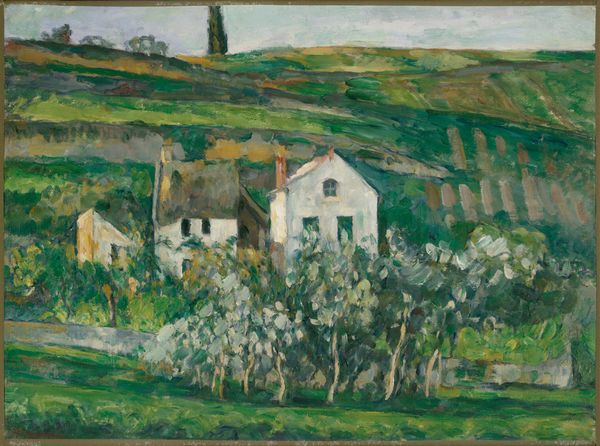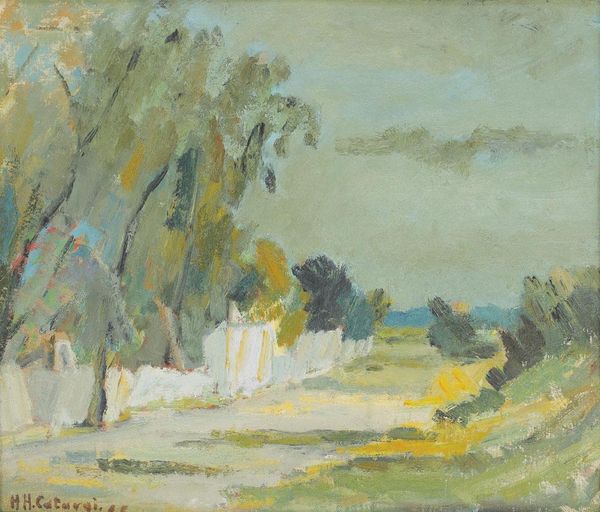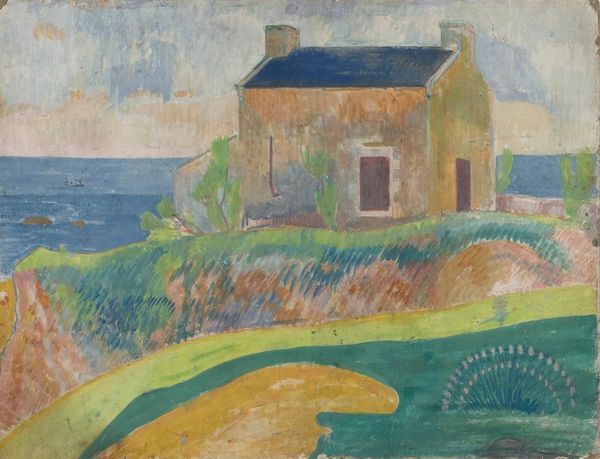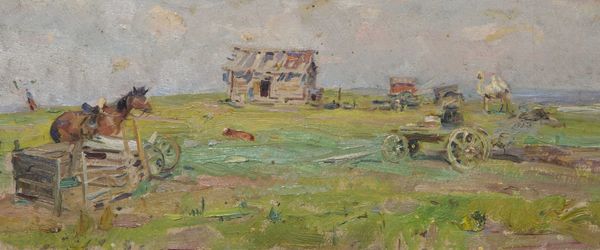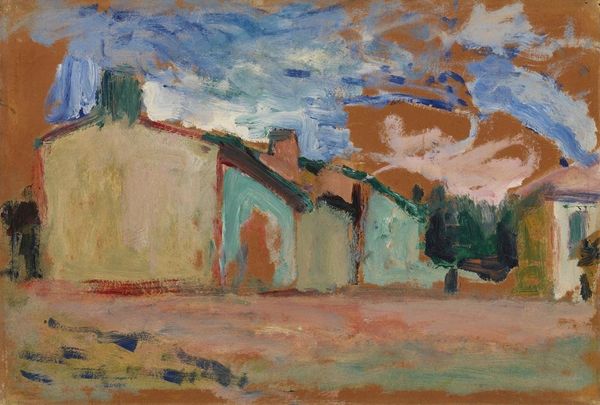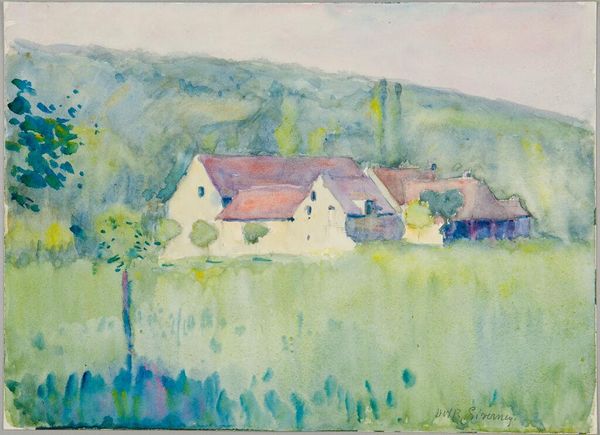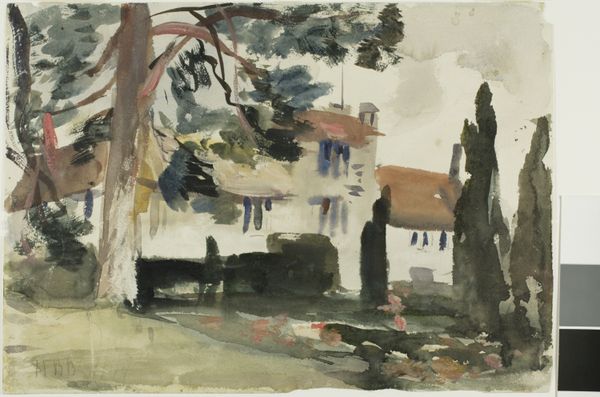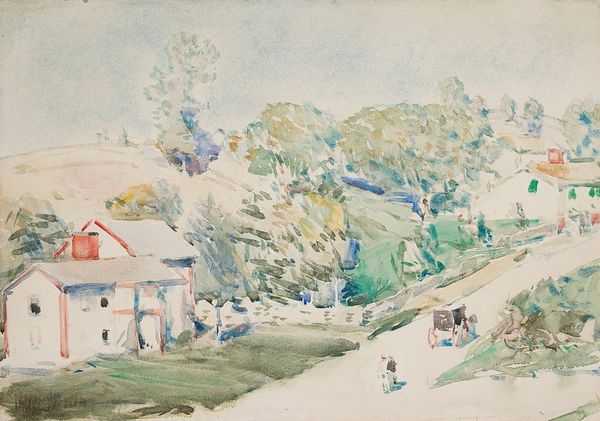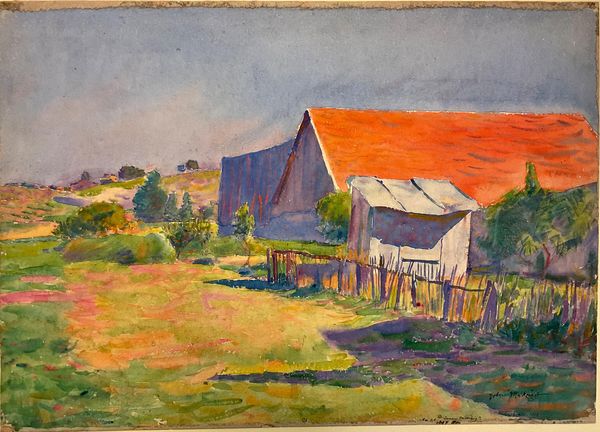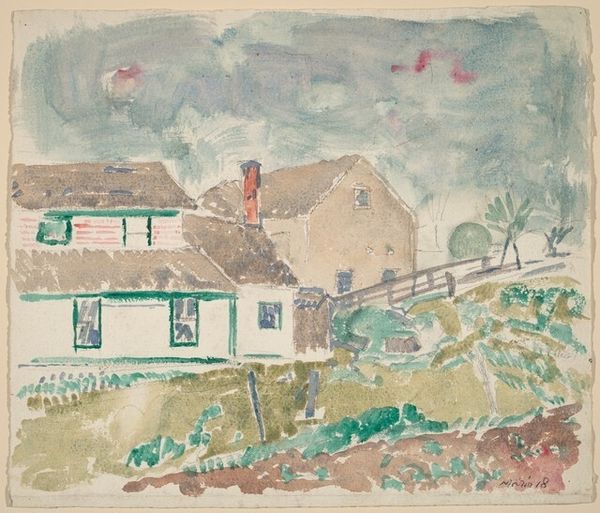
Copyright: Public Domain: Artvee
Editor: This is "Pejzaż wiosenny," or "Spring Landscape," painted by Tadeusz Makowski sometime between 1920 and 1921, rendered in watercolor, perhaps en plein air. It has this incredibly light and airy feel to it. What do you make of it? Curator: Focusing on its intrinsic elements, one immediately notices Makowski’s command of light and color. The subtle gradations in hue, particularly in the rendering of the sky and foliage, speak to an Impressionistic sensibility. Observe how the brushstrokes, applied with a delicate impasto technique, create a vibrant surface texture. Editor: Impasto? You mean the thickness of the paint? It seems very delicate here... Curator: Precisely. It is not the heavy impasto of, say, Van Gogh, but rather a restrained application that enhances the luminosity. How does the composition—the arrangement of the architectural forms and natural elements—contribute to your perception of the work? Editor: I find it almost dreamlike. The building is grounded by a few strong shapes, but the blossom almost blends into the air... Curator: Indeed. The semiotic reading of these shapes and their interplay reveals a dialogue between solidity and ethereality. The stable architecture contrasts with the fleeting nature of the blossoms, symbolizing the transient beauty of spring. Consider how Makowski employs this dialectic to convey a sense of time and change. What’s your perspective on the overall mood? Editor: It’s optimistic, somehow both delicate and strong. I hadn’t considered how the contrast was part of that feeling. Curator: The analysis of the elements creates, for me, a renewed appreciation for the artist's structural skill and expressive abilities. Editor: I can now better see the elements interacting. Thanks for the lesson in looking beyond the surface!
Comments
No comments
Be the first to comment and join the conversation on the ultimate creative platform.
